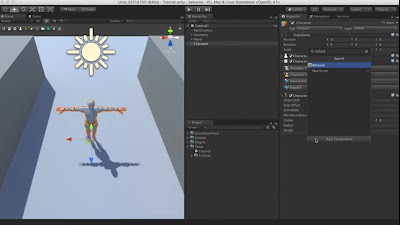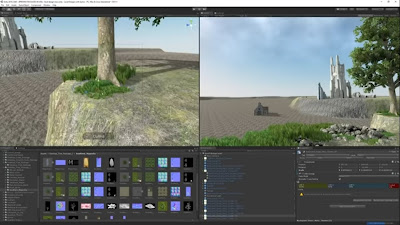If you’re a developer who wants to get into games, you may think that there are big differences between game and app development. But it’s important to realize that the majority of the work in each type of development is similar. Day to day as a game programmer, you’re mostly just working in code, solving problems—that’s the same thing you do when you’re building business apps.
Pick a Simple Game to Practice
While you create a game, it is important to think about the game mechanics, rewards, player engagement and level design. A game developer could be a programmer, a sound designer, an artist, a designer or many other roles available in the industry. Game Development can be undertaken by a large Game Development Studio or by a single individual. It can be as small or large as you like. As long as it lets the player interact with content and is able to manipulate the game’s elements, you can call it a ‘game’. To get involved in the Game Development process, you do not need to write code. Artists may create and design assets, while a Developer might focus on programming a health bar. A Tester may get involved to see that the game works as expected.Step 1: High Concept The first major step in how to develop a game is the high concept. This is a general idea. It’s a very brief description where you try to distill your ideas down to a few sentences Step 2: Pitch This is the big one. You pitch your idea in a summarized form to best communicate ideas and their goals. It’s also a time to promote why it would be a prudent idea to develop financially and commercially. Step 3: Concept Further along, this is the lovechild between the high concept and pitch. This is where you outline and describe all of the aspects of the game. We’re talking story, demographics, risk analysis and a boatload of further information. Step 4: Game Design Document This document includes aspects tied to actual gameplay and may include prototypical aspects of your project. Step 5: Prototype This is where you and your team can shine early on. Building the prototype will allow you to develop the methods in which you’ll fully execute your idea. It’s a good way to build a proof of concept, adapting your goals into a more tangible form.
you would have been out of luck. Finding good art for a game was an expensive and time-consuming task. But with the explosion of indie development, sources for quality art at cheap prices have proliferated. I use the Unity engine primarily for game development, and have found that it has tens of thousands of graphics and art available in the Unity Asset Store for low prices—and a ton of it is just free. In my experience, just about anything you could want is available and ready to use in your game in one of these existing engines. There’s no need to learn modeling, find an artist, or even hire an animator. (Of course, a bigger team will include these roles or want to hire someone to create art specifically for their game, but starting out solo, these actions are more an excuse than an actual requirement.) And importing that art is simple. Drop it into the Unity project view and you’re done. The art is ready to use. Drag it from the project view to your scene and it renders—remember, the hard work is already done for you.
Start with 2D Games
I mentioned that you should probably start small by going with a simple game. A simple game usually means something 2D. And you may be thinking “I hate 2D mobile games.” You’re not alone. But that’s not a reason to skip the simple projects. Actually, a 2D game is technically no different from a 3D one. You’re doing the same things, just rendering everything flat. The transition from 2D to 3D development in engines like Unity is practically seamless. You can simply hit a button and your view switches. You can build the game using 2D sprites, or you can build it entirely in 3D and just swap a camera setting when you’re done. That’s a technique I use all the time—building 3D models and then using the camera to make them look flat.Game Development Tools
Unreal Engine If you’re looking to create a game with AAA graphics without writing a single line of code, look no further. The Unreal Engine 4, while still plenty useful to C++ programmers, has allowed designers to dabble in game making with their ingenious Blueprint system. With Blueprints, no laborious coding is needed. The Unreal Engine has powered mighty franchise games like Tekken 7 to indie gems like Abzu. Previously, the Unreal Engine was only available to game developers with serious cash to burn. Now, you can get your hands on a copy of Unreal Engine 4 for free, if you agree to a 5% royalty of whatever you earn. Unity Looking to create an amazing VR experience? Or maybe you’d just like to create an addictive 2D iOS app? Then brush up on your C# and get to coding with the Unity Engine. One of the most popular game engines out there, Unity has been used to create the critically-acclaimed Gone Home, the strategy mobile game Deus Ex: Go, the immensely popular space flight simulator Kerbal Space Program, as well as countless others. This beloved engine is free, but extra features come at a price. Luckily, it won’t break the bank. Unity offers a few affordable royalty-free subscription plans for burgeoning indie devs. Godot Engine The Godot Engine is open-source. It’s completely free to use for personal or commercial use. You own the game completely. You can even edit the engine directly if you so desire. No royalties, subscriptions or tributes necessary. You only have to have passable C++ programming skills and a concept for a video game to start. That’s all. You can create cross-platform 2D or 3D games right out of the gate. The Godot Engine may be light on the wallet, but, thankfully, it’s never light on features.It offers a fully-integrated development environment similar to paid engines and adds new features regularly. 4. Gamemaker Studio GameMaker Studio is the leading all-inclusive 2D game development environment available. Its drag-and-drop interface makes it possible to make a video game without any coding -- simply set your scene and actors with a few clicks. You also have the option of programming in its own scripting language, Game Maker Language. GameMaker Studio is an especially good fit for mobile developers as it is strictly concerned with 2D game development. Popular iOS games such as Cook, Serve, Delicious, Simply Solitaire and Deadbolt were all made with GameMaker Studio. The newest iteration, GameMaker Studio 2, boasts a host of features, such as animation support
Once you get that first build done, if you’re anything like me, you’ll be hooked … and perhaps make a career switch into the wonderful world of game development.








No comments:
Post a Comment